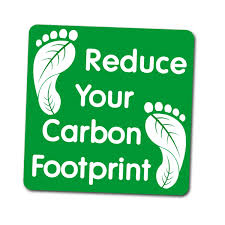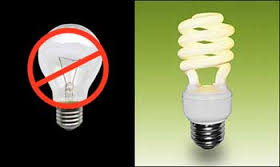To denote the amount of carbon dioxide and other green house gas discharges in the environment, environmentalists have come up with an interesting new term- carbon footprint. A carbon footprint traces the total extent of carbon emissions of an individual, organisation, community or a society.
All of us are responsible for some amount of carbon emission in the environment. There are ways by which carbon footprints can be measured. By taking into account certain factors like food, housing, transportation and standard of living the carbon footprint of an individual, a city or a country can be calculated. Calculation of our carbon footprint is a necessity. It is a brave thing to do and the results can be quite shocking. It makes us conscious of our habits and drives us towards change.
It is estimated that the average carbon footprint of an individual is around 4.4 tonnes, although the accurate number is almost impossible to determine. After successfully measuring your carbon footprint, you can move on to its reduction. There are numerous ways to reduce carbon footprint. If reduction is not possible, there is another method called carbon offsetting which can be carried out in place of reduction. Carbon offsetting is counteracting or compensating the carbon emissions by doing something that reduces atmospheric carbon dioxide. Examples of carbon offsetting is when you travel by air for a business meeting, but later compensate it by cycling to work for a week. Ideally, both carbon offsetting and reduction should be done together for the benefit of the environment.
- Start at home
“Home is where the heart is”- is a popular saying that we can put to use in this situation. Let us follow our hearts and make a change. Before bringing a change in the society, we have to bring a change in ourselves and our way of living. You will be surprised to learn that a huge percentage of our individual carbon footprint actually comes from our homes. Air conditioners, water heaters, thermostats, refrigerators, electronic equipments and light bulbs contribute to the carbon emission at home. This can be reduced by a few simple measures-
- Buy energy efficient gadgets from now on. Almost all equipments like water heaters and refrigerators come with energy saving modes.
- Use energy efficient CLF or LED light bulbs rather than the incandescent ones which emit harmful mercury.
- Switch off laptops, computers or televisions when not in use.
- Proper insulation of the house is necessary.
- Use solar powered water heaters instead of the electrical ones.
- Recycle the waste products instead of throwing them away. The energy that is required to manufacture a product is much more than if it is recycled.
- Regulate the thermostat whenever it becomes too hot or cold.
- Consume less dairy and meat because processing of meat or dairy burns a lot of energy. Switch to a more vegan diet.
- Reduce your carbon footprint while working
- Offices sometimes use a lot of paper which are ultimately thrown away. Instead of throwing stuff away, put all the reusable items to recycle.
- There is a lot of energy wastage in an office. Air conditioners, fans and lights are kept running for hours even when not needed. As a result a lot of energy is wasted. Instead of keeping both the fan and air conditioner on, switch off the ac once in a while. Switch off the light and fan when leaving a room.
- Keep your computers in power off mode when not in use.
- Don’t buy processed food in the cafeteria. Carry your lunch from home.
- Find out if the electronic equipments like printers, fax machines, copiers are energy efficient or not. Also, the lights and air conditioners should also be energy star products. If they are not, ask the officials to change them. Form a committee and give a written petition to change the equipments.
- Travel smart
- Commuting wisely goes a long way in reducing carbon emissions. Telecommunication or working from home is probably the best excuse for not using your car. If that is not possible, try and share a ride with others. A car can accommodate up to five persons. So as an alternative to taking individual cars, give rides to one another. This saves a lot of energy.
- Ride fuel efficient vehicles that burn less energy.
- Ride a cycle in place of a car. Apart from choosing to be eco-friendly, riding a cycle can be good exercise.
- Switch off the ignition when halted at a signal.
- Try to stay within the speed limit while driving and don’t accelerate unnecessarily.
- Air travelling is something that cannot be avoided sometimes. The only alternative is to travel less by air. Business and leisure trips can be combined if possible. For a vacation, opt for nearby places where you don’t have to travel by air.
These are some basic guidelines to help you in the road to a greener and better future. If you can incorporate them in your daily life, others get inspired and follow you. This way, very soon millions are walking in your footsteps to remove their carbon footprints from the face of the earth.



Leave a Reply